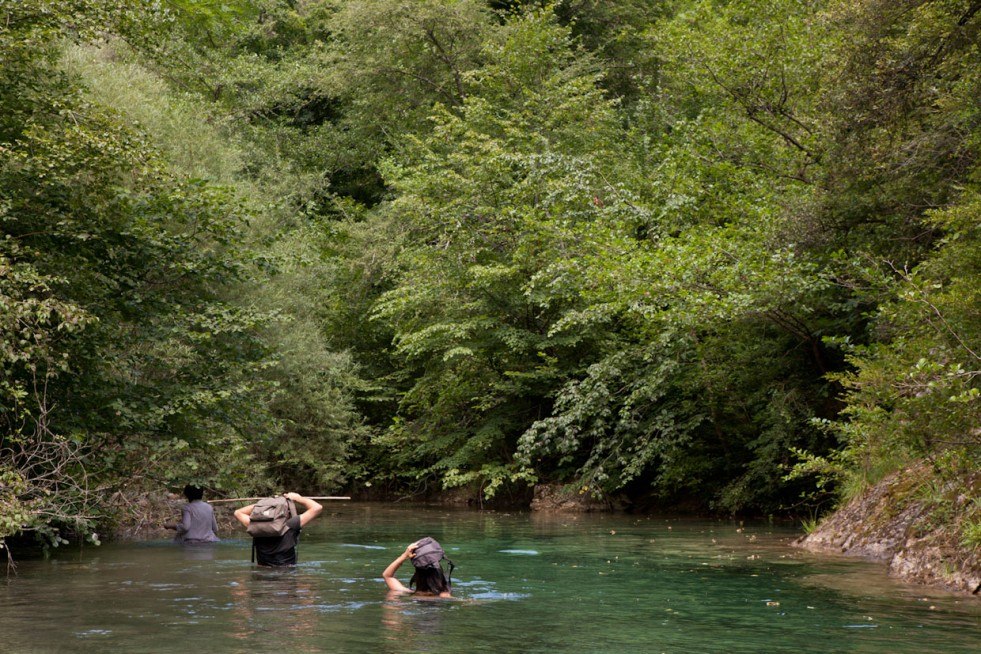No man’s Land is a collective research project in which playing and the river are intertwined elements used to reveal illicit activities and customs, that restores an ownerless space, forgotten and free from social norms and rules. The game practice in its broader sense reveals itself as an observation of the context and its inhabitants.
The river, as the core of a community’s inner life, is manifested in its multiple uses, related to the gathering. The function of the river as a public washing place changed with the creation of the public baths during the XVIII century, and the further set up of private baths in the XIX century. This fact decentred the river from the routine activity of the village inhabitants, giving place to a fissure that was over time occupied, by games, forbidden practices and transgression.
Today this is how we find a land, that not being as such, has no rules. A place where the rules, if there any, are continuously transformed.
This change constituted the river far away from vigilant eyes, freed from the village norms and rules. A “no man’s land” whereby genesis of anything is stable. In it everything is diluted and displaced. The relational transformation between river and humans, their uses and appropriations, are continuous. These relations keep changing and the actual forgetfulness, the symbolism and the gathering that once used to take place there, have been lost on its way.

Our relationship with the river is temporary and always dependent on its boundaries. A “no man’s land” where the men have constantly remade their relations. The river, even in its stillness always flows. To watch the river is to look at the past, it is remembering the water drop that flowed passed you. The submerged state is only temporarily inhabitable for humans, but paradoxically we cannot survive without it.
This instable and paradoxical relation generates a relational vortex. A dynamic space where the pact is always transformed. The potential site for the creation of temporal states.
An action that embodies a particular language that is able to be rememorized by always being transformed by the community.
Therefore, the No Man’s Land project, explores game and ritual as temporary forms of relations with the river, by means of being technologies able to create an independent order for its participants, temporarily reinhabiting a forgotten site.
No Man’s Land es un proyecto que usa el agua y el juego como revelador de lo ilícito. Re-habitando un espacio olvidado libre de normas sociales y de poseedores.
No man’s Land is a project that can rebuild and rememorize things, not just name them. No Man’s Land is the action itself.
The project highlights social research and communal action. By means of being immersed in the context the project is always developed with the local communities. On one hand, it aims to retrieve the testimonies that contain memories of hidden practices, customs, representations, tales or myths to be listened to again. On the other hand, it acts on the river and its banks recreating and rememorizing new stories, myths and experiences so they can be recovered in the future. It is embodied in a sound and audio-visual archive, collective actions and pieces that are the traces of these actions, such as Documentation of 19 days living in a cave, Hidronoma, Magdalena, Avon Mudpark, or Watereye.
Through situations, public actions or workshops, these rivers become the catalyst of temporal communities, new pacts and future understandings.
“It must be lived again what cannot be specified anymore.” (Enrique Rodriguez: 2011)
To date the project has been divided into several parts: